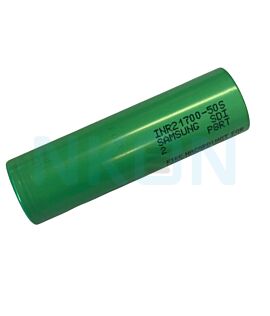Taking control of charging
The 10S1P of Samsung 21700 50S 5Ahr is on order, so with a test and comparison to be made with super el-cheapo hover board batteries, it was time to take control of charging. I wanted to be able to more closely monitor the charging process and add a bit of extra safety too. Later on I wanted to be able to measure the amount of charge applied to a battery and to be able to measure the batteries Ahr capacity in a controlled way.
Monitoring the charge process
I wanted to be able to control the charge cut off voltage for three reasons;
First there are indications if you mostly charge to 41V (for a 10S battery) then you may extend battery life.
Second if your not going to use the battery for a while it can be a good idea to charge only to say 38V for storage.
Third, if you could set a charge cut off voltage of say, 42.5V, you would have some protection against a charger failure potentially causing a battery fire.
However most all eBike chargers have a fixed charge limit of close to 42V, they are not normally adjustable, which in itself is maybe is a good idea for safety reasons.
There is a low cost device (£8.50) that will monitor the battery voltage with settable low and high voltage limits. This device is the XH-M602. It has a mains relay which allows it to turn on or off a connected battery charger according to the set limits.

So if you set an upper limit of 42.5V and something went wrong with the charger then the XH-M602 will detect the over voltage and remove the mains power to the charger, thus maybe preventing a battery overcharge and\or fire. If you do only want to charge the battery to 41V, then just set that as the upper limit.
The XH-M602 is a bare PCB with mains connections and it would not be safe to use it on the bench uncased. So a simple box was needed.
Clip top food containers, the good ones, are fairly solid, easy to work as project boxes and cheap. I decided to use a 680ml one from Tesco.
The switched mains output is connected to a twin mains socket, one socket for the charger and another for a timer light, etc. I suggest that only those with experience of working with and building mains equipment attempt such a build.
The mains leads are fixed in place with grommets from TLC Electrical and there is a pair of shrouded multimeter style sockets to tap into the battery voltage. The matching plugs are shrouded, since using bare plugs would be a considerable hazard, all too easy to accidentality short something out and many many amps could flow from our battery.
The XH-M602 was mounted on hex threaded nylon pillars to bring the display and switches closer to the lid. The switches were extended outside of the box by gluing and heat shrinking some short rods to the top of the switches on the PCB. The assembled charger controller is shown below. Easy to secure the lid with self tapping screws if you wish.

I needed a lead set to go between the battery and the charger which would allow the charger controller to monitor the battery voltage. The shrouded multimeter plugs in the picture above go in the sockets on the charger controller. There is a fuse in-line with the battery positive. If you wanted to check the accuracy of the XH-M602 voltage display then the shrouded plugs used have a 4mm socket on them allowing you to daisy chain and plug in additional leads such as for a separate multimeter. The battery leads are on the bottom left and the charger connects to the anderson powerpole connectors on the bottom right.
I discovered a problem however, the Swytch battery\controller pack does not appear to connect the battery to the charge socket unless there is a voltage present on the socket from the charger. So the XH-M602 does not see a battery voltage and leaves the charger mains off. To correct this problem you need to force the charger to initially switch on so its output voltage then turns on the battery and the XH-M602 is happy.
The circuit of the XH-M602 looks straightforward there is a 12V relay switching the mains for the charger with one end of its coil connected to +12V and the other end grounded by an open drain or open collector transistor. So all we need is a push to make switch with one wire to the open drain or open collector transistor (or the anode of the diode across the relay coil) and the other end to circuit ground.
I made the change and the charger, if needed, can now be forced on at the beginning of the charge cycle, hold the button down for a few seconds, release it and the charger should now stay powered, assuming the battery is not equal or higher than the stop voltage.
The XH-M602 is a low cost option that allows you to take control of the charging process and you can charge your batteries to the voltage you choose as long as its within the chargers limits.






















